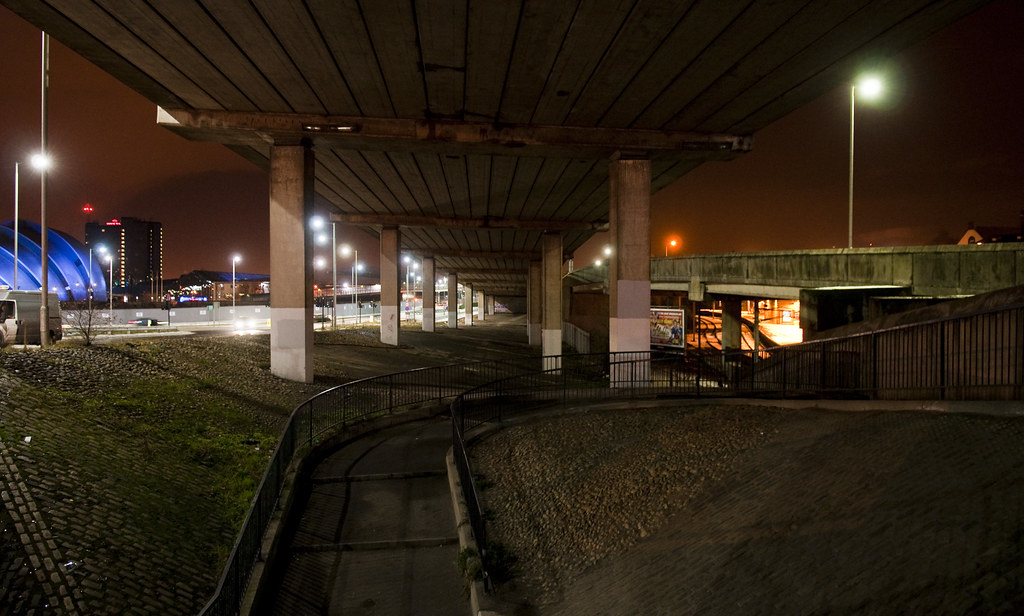It is telling that the report linked above is titled "Berryden Corridor Improvements", thus prejudicing it's own conclusions. That the creation of extra road-space exclusively for motor transport is an "improvement" is a conclusion which is increasingly seen as mistaken. We have written on this subject on one or two occasions before.
We so very much wish that it were true that congestion could be solved by the simple, seemingly common-sense expedient of building more roads. But, unfortunately, world-wide and decades-long experience of the building of relief-roads, bypasses and linkroads confirms without even a hint of doubt that it is not.
More and more, in every part of the world from Australia through Asia to Europe and even including the USA where the car is King, it is realised that more roads means more congestion and that the only thing which will reduce congestion is a policy which delivers fewer journeys undertaken by car.
It's a cliché and a truism to say that one of the definitions of madness is doing the same thing over and over again, and expecting different results. So why do we expect that building additional road capacity will have a different effect this time? It will not; it will merely impoverish us by further devastating parts of our town which are already suffering blight and degeneration.
We are reminded of lessons unlearned elsewhere:
From Report on A highway Plan for Glasgow 1965.
These paper-bound utopian visions, unfortunately, turned into an alienating horror in the real world.
From At War With the Motorist's splendidly psychogeographically logged visit to Glasgow: Crap cycling and walking in car sick Glasgow.
Glasgow continues on to repeat the same errors with new urban motorway and dual carriageway projects. It seems that we in Aberdeen cannot bear to be left out. As one commenter puts it: "Why would anyone want to walk anywhere when they can drive through the remains of the city at 50mph." And another: "Worth every penny, so it is. Heaven forbid that anybody might have to go anywhere, anytime at less than a respectable 60mph."
Should the Berryden Corridor urban dual carriageway be built as proposed, it will fulfil one function only - it will bring more motor traffic into the centre of town at an increased speed. From this function, effects flow: It will increase congestion; it will increase noise and atmospheric pollution; it will act as a barrier to east-west permeability and mobility for pedestrians and cyclists; it will isolate communities and it will have a detrimental impact upon the liveability of the inner part of our town north of the centre. It will thus increase social exclusion and alienation. This is the direct opposite of the study aims which, in the very first paragraph state that the project will "contribute to making Aberdeen’s transport network more efficient and sustainable over the coming years, ensuring that the city remains an attractive place to live, visit and work."
In the past, we have praised Aberdeen's surprisingly good cycling profile and we regularly revel in it's fantastic network of quiet and serene pedestrian paths which take walkers away from the stress of interacting with motor traffic.
We'd hate to have to reverse our position on this, particularly when our non-car infrastructure is beginning to gain International Fame.





1 comment:
We only have to observe the bleakness & utter desolation of the entire length of East/West North Street, from Mounthooly to the Castlehill roundabout, to realise the destructive futility of this outdated slash-and-burn approach to town planning, with its demented prioritisation of an accelerated flow of vehicular traffic above every other consideration. How many streets, houses and communities were destroyed to accommodate the East/West North Street urban motorway? And there is a cluster of nice little residential streets such as Caroline Place near the former Rosemount Church, really a kind of urban village, standing in the way of the proposed Berryden Junction!
Post a Comment